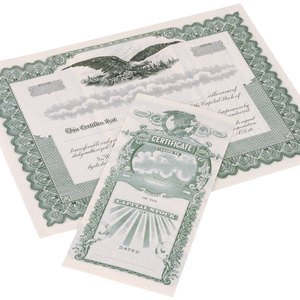
A company reports three different numbers of shares of common stock on its balance sheet: authorized, issued and outstanding. The number of authorized shares is the total number of shares the company can legally sell to investors. The number of issued shares is the total number of authorized shares the company has already sold to investors. Investors typically focus on the number of outstanding shares, which is the total number of issued shares investors currently own that the company has not reacquired. The total number of outstanding shares affects your ownership interest in the company.
Find the “Stockholders’ Equity” section, the last section of a company’s balance sheet.
Find the “Common Stock” line item in the section.
Identify the number of shares authorized in the common stock line item’s description. For example, if a company shows 500,000 shares authorized in the common stock line item’s description, it can sell up to 500,000 shares to investors.
Identify the number of shares issued in the common stock line item’s description. This number is typically much smaller than the number of shares authorized. In the example, if a company’s balance sheet shows 20,000 shares issued, the company has already sold 20,000 of its 500,000 authorized shares to investors.
Identify the number of shares outstanding in the common stock line item’s description. In the example, if the company’s balance sheet shows 15,000 shares outstanding, investors currently own 15,000 of the company’s 20,000 issued shares. This means the company has repurchased the other 5,000 shares, which are called treasury stock.
Tips
If a company has not repurchased any of its outstanding shares, the total number of issued shares will equal the total number of outstanding shares.
Monitor the number of a company’s outstanding shares to determine changes in your ownership percentage of a company. If the number of a company’s outstanding shares increases, the number of shares you own will represent a smaller ownership percentage of the company. If a company buys back some of its outstanding shares, your ownership percentage will increase.
References
Tips
- If a company has not repurchased any of its outstanding shares, the total number of issued shares will equal the total number of outstanding shares.
- Monitor the number of a company’s outstanding shares to determine changes in your ownership percentage of a company. If the number of a company’s outstanding shares increases, the number of shares you own will represent a smaller ownership percentage of the company. If a company buys back some of its outstanding shares, your ownership percentage will increase.

